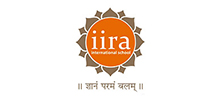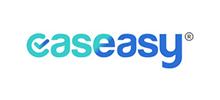FAQ:
What you habitually think largely determines what you will ultimately become.
– Bruce Lee
Generally, it takes about 45 days to process PR cards for new permanent residents once IRCC receives a complete application package from individuals who have fulfilled their residency requirements. Applications for renewed PR Cards generally take 104 days.
Here are 5 of the major benefits you’ll experience once you become a Canadian permanent resident:
– YOU CAN LIVE AND WORK ANYWHERE IN CANADA. …
– YOU GET ACCESS TO UNIVERSAL HEALTHCARE AND SOCIAL SERVICES. …
– YOU CAN SPONSOR YOUR SPOUSE AND CHILDREN. …
– YOU CAN BECOME A CANADIAN CITIZEN.
– YOU LIVE MORE THAN AVARAGE LIFE EXPECTENCY, NATURE WILL HELP YOU TO DO SO.
You cannot buy a property in Canada and get Residency and Citizenship. Canada has a higher standard for Investors wanting a permanent Residency Visa. You cannot make your own investment or buy a company or start one in order to receive Canadian permanent residency as an Investor.
- Express Entry. …
- Provincial Nominee Program (PNP) …
- Quebec-Selected Skilled Worker Program. …
- Start-up Visa Program. …
- Family Sponsored Visa Program. …
- Self-Employed Program.
Yes, you can lose your permanent resident (PR) status. If you haven’t been in Canada for at least 730 days during the last five years, you may lose your PR status.
Canada provides free public education to all Canadian citizens and permanent residents from kindergarten until they complete secondary school, typically at age 18. … Your child could attend public school, but you’d have to pay tuition – and that tuition could be nearly as much as you’d pay at a private school
Unlike some foreign countries, you do not need a job offer to immigrate to Canada. There are programs available for you that allow you to apply for permanent residency in Canada without securing employment beforehand. You can apply for permanent residence if you are considered a Skilled Worker.
All Dutch Caribbean territories (90 days) Anguilla (maximum 3 months) Bahamas (90 days) Bermuda (maximum 6 months) British Virgin Islands (up to 6 months) Cayman Islands (60 days)
The first step is to get admission to a Canadian Designated Learning Institution (DLI) recognized by the government of Canada. Once an individual receives a letter of acceptance from a DLI, he or she may be able to apply for a study permit. Applications may be made online or by mail. All new study permits are issued at a Canadian port of entry. An applicant who has submitted an application to a foreign Canadian Visa Office will be issued a letter of approval advising him or she to travel to a Canadian port of entry to have the study permit issued. A study permit is generally issued for the duration of the person’s studies.
While a study permit authorizes international students to pursue their studies while in Canada, a Temporary Resident Visa (TRV) allows a person to enter Canada. Depending on the country of citizenship, an international student may need a TRV for entry. For overseas applications, applicants from countries whose citizens require TRV in order to enter Canada will be issued a TRV automatically if the application for a study permit is approved. These applicants do not need to submit a separate application for a TRV and there is no separate fee. The same applies to applicants from countries whose citizens need an Electronic Travel Authorization (eTA) in order to enter Canada by air.
A study permit application should be complete upon submission. A visa officer may make a decision based on the documents submitted with the initial application without giving the applicant a chance to submit the missing document
An international student may be eligible to work while studying in Canada. A student must have a valid study permit and be enrolled full-time at a Designated Learning Institution (DLI). Study permit holders may be allowed to work for up to 20 hours per week during regular academic sessions and full time during scheduled breaks. In order to work “off-campus”, a study permit must be authorized for off-campus work by a visa officer. If you are enrolled in a full-time academic, professional or vocational training program at a designated learning institution, you may be eligible to work “off-campus” without a work permit. However, it should be printed on the study permit that you are authorized to work off-campus. An international student must stop working the day they no longer meet the eligibility requirements. There is an important exemption to this regulation: students enrolled in an English as a Second Language (ESL) or French as a Second Language (FSL) program are not authorized to work with a study permit.
Canadian immigration policy offers international students many ways to stay and settle in the country after graduation. A popular option available to international students after graduation is the possibility for an open work permit under the Post-Graduation Work Permit Program (PGWPP). Under the PGWPP, an individual who has studied full-time at a participating Designated Learning Institution (DLI) may be eligible to apply for a PGWP. Gaining work experience in Canada after graduation may help you qualify for permanent residence in Canada through a variety of immigration available immigration programs. For more information on PGWP eligibility criteria. Generally, if a PGWP is issued, it is for the same duration as the applicant’s studies for a minimum of eight months and a maximum of three years.
Faster visa processing through the Study Direct Stream (SDS) program launched by the Immigration, Refugee and Citizenship Canada. Unlike the usual visa processing that may take up to 2-3 months, SDS allows students from India to avail their visa in 4-6 weeks. When a student who meets the eligibility, criteria applies via SDS, most applications are processed within 20 calendar days. A replacement to the erstwhile SPP program, SDS has more stringent rules and regulations to fulfill. However, it can be extremely beneficial for those who meet the criteria as it provides easy visa processing for SDS entitled DLI institutions and requires less financial documentation.
A designated learning institution or DLI is a university, school or college approved by a provincial or territorial government to host international students. All public universities, colleges and major private universities and colleges in Canada are DLI. So, if you’re applying for a study permit, you are required to have a letter of acceptance letter from a DLI. You should know that international students can only be recruited by a DLI; a non-DLI is not permitted to admit international students. Note: DLI doesn’t entitle automatic eligibility for post-study work permit.
A GIC is a Canadian investment that has a guaranteed rate of return for a fixed period of time. In simple words, as an Indian student wanting to study in Canada, you’ll be required to open a Canadian bank account online with any one of the designated banks. Once your account is created, the bank holds your GIC in a student account or an investment account that you’ll be able to access only when you arrive in Canada. It releases your funds only upon the confirmation of your identity when arrive in the country. While you can take an initial lump sum amount on arrival, the remaining is distributed monthly or bi-monthly over a period of 10-12 months. Remember, the bank from which you purchase your GIC must provide you with any of the following: a GIC certificate a letter of attestation an Investment Balance confirmation an Investment Directions confirmation The IRCC (Immigration, Refugees and Citizenship Canada) verifies every GIC, eliminating the possibility of any kind of financial document related fraud. No other financial document is required under SDS to prove to the IRCC that the student has sufficient funds to support their tuition fee and living expenses.
ICICI Canadian Imperial Bank of Commerce (CIBC) SBI Canada Scotiabank HSBC Bank of Canada
To be able to apply for a study permit via SDS, you’ll have to fulfill certain conditions, such as Acceptance from a post-secondary designated learning institution (DLI) Tuition fee paid for your first year of study Guaranteed Investment Certificate (GIC) of CAD10,000 Minimum score of 6 in IELTS with no band less than 6
Not all DLIs make you eligible for the Post-Graduation Work Permit Program. The last column of DLI List is the “Offers PGWP-eligible programs”. If you want Post-graduation work permit after Study, Choose the institute with YES in “Offers PGWP-eligible programs” column. you need to meet all other criteria to get a post-graduation work permit.
Not all DLIs make you eligible for the Post-Graduation Work Permit Program. The last column of DLI List is the “Offers PGWP-eligible programs”. If you want Post-graduation work permit after Study, Choose the institute with YES in “Offers PGWP-eligible programs” column. you need to meet all other criteria to get a post-graduation work permit.
If the university where you have applied falls under the list of designated learning institutes (DLIs) then he/she will be qualified for the SDS program.
Under the requirements set for the SDS program, candidates need to show IELTS exam as their English Language Proficiency test, TOEFL and PTE exam are not accepted under the new SDS category.
If the candidate has paid the first-year fee and are meeting all the requirements set under the SDS program, he/she can apply for the Study Permit under the SDS program.
Any school authorised by a provincial or territorial government to host international students comes under the category of designated learning institutes. Those who are not qualified to apply under the SDS program, can they apply for a Canada Student Visa? If a student is not qualified to apply under the SDS category, they can still apply for a Student Visa, however, their application will be processed under the standard procedure and it will take 60 days.
If the candidate’s Student Visa application is rejected, they can approach to the school they have applied and ask for a refund of their tuition fee. Also, they can contact their bank to claim the full refund of their Guaranteed Investment Certificate (GIC).
If the candidate’s application is approved, the Canadian High Commission issues a study permit and send it to the candidate’s address along with his/her passport with the stamped visa. However, this is not the original study permit. Candidates need to show this to the immigration officials while entering Canada, there he/she will be issued the original study permit.
More colleges and universities (1400) come under the SDS program. Candidates need to check whether their college falls under the SDS category or not.








